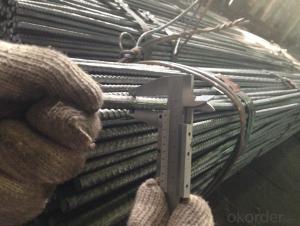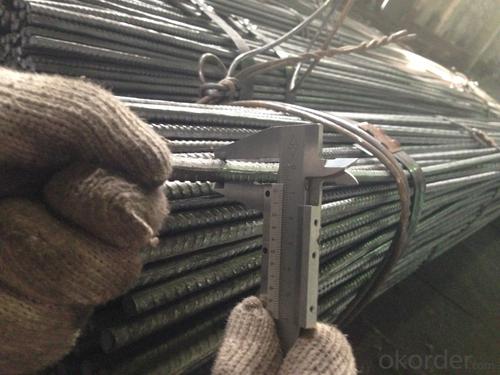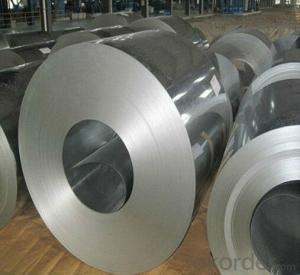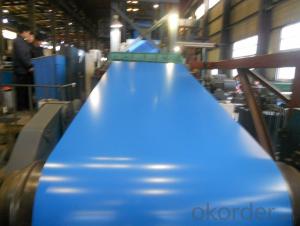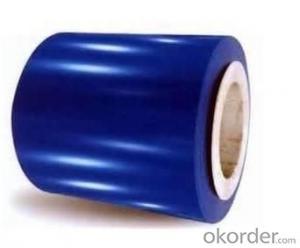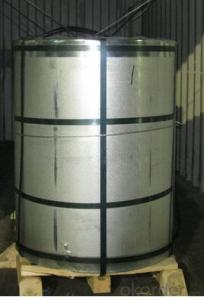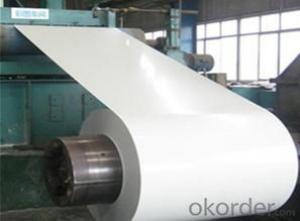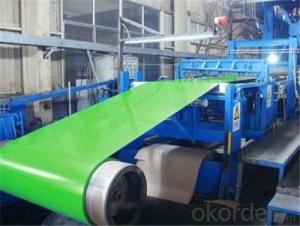reinforcing bar steel rebars in bundles construction building material
- Loading Port:
- Shanghai
- Payment Terms:
- TT OR LC
- Min Order Qty:
- 11 m.t.
- Supply Capability:
- 111111 m.t./month
OKorder Service Pledge
OKorder Financial Service
You Might Also Like
Specifications
reinforcing bar steel rebars in bundles construction building material
1.Diameter:6mm-50mm
2.Length:6-12m,coils,U shape
reinforcing bar steel rebars in bundles construction building material
We have large stock for BS4449 460B,500B, HRB400 (12MM,16MM,20MM)
1. BRIEF INTRODUCTION
Rebar is common known as steel reinforcing bar, usually applied to reinforced concrete and reinforced masonry structures. Formed from mild steel, it is given ribs for better frictional adhesion to the concrete. In other words rebar is an iron rod, a weldable plain reinforcing steel bar, that it can be also used for steel meshes.
Type | Reinforced Steel Rebar |
Standard Grade | GB(HRB335/HRB400/HRB500) |
BS4449-1997 GRADE 250B,460B, BS4449-2005 GRADE 500B | |
ASTM A615 GRADE 40,60,75, ASTM A706 | |
DIN488-1 420S/500S,BST500S | |
JIS G3112 SD35, SD40, SD50 | |
NFA 35016 FE E 400, FE E 500 | |
CAN/CSA.G30.18-M92 GR400,GR400W GR500 | |
IS739 S 400, S 400W | |
NCH204 A63-42H,A44-28H | |
UNE 36-068-94 B500S | |
AS4671 GRADE 500N | |
GOST A3 R A500C | |
Diameter | 6mm-50mm etc. |
Surface finished | Deformed |
Epoxy coating | |
Galvanized coating | |
Length | 6m, 9m,12m ,15m U shape or as your request |
Application | construction industry with all types of reinforced concrete structures and so on |
Packing | standard export packing, or as per customers' requirement |
Quality | First quality |
Production capacity | 1000 tons for one day |
Annual outcome | 600,000MT |
Package | by bundles,2-3tons each bundle |
provider | sample , mill test report, any time can visit my factory |
Delivery time | A.S.A.P |
Others | 1. all the production process are made under the ISO 9001 strictly |
2. our products conform to all the standards | |
3. we can offer special specification products as per our customers | |
4. we can offer the original mill test certificate and original production |
- Q: What are the different types of steel coil loading and unloading devices?
- There are several different types of steel coil loading and unloading devices, including coil lifters, coil hooks, coil tongs, coil grabs, coil c-hooks, coil fork attachments, and coil transfer cars. These devices are used to safely and efficiently handle steel coils during transportation and storage processes.
- Q: How are steel coils used in the HVAC industry?
- Steel coils are commonly used in the HVAC industry as a key component in air conditioning and heating systems. They are used to transfer heat energy, allowing the system to cool or heat the air efficiently. The steel coils act as heat exchangers, absorbing heat from the air and releasing it into the environment or vice versa. This process helps regulate the temperature and improve the overall performance of HVAC systems.
- Q: I'm currently in an Estimating and Bidding class. I have to estimate two divisions for a multi-million dollar project. The project that I chose is around 6 million dollars and involves constructing a new gas/lighting building. I chose to estimate steel, and my question is, around how much out of the 6 million goes toward just the steel estimate? If it helps, this building is has two floors and is roughly about 100x70 feet. The building not wood construction, but rather steel and brick. How much of that 6 million would go into the steel? I'm not looking for anything exact, just roughly.
- It is not clear what stage this project is in. Is it preliminary or has a detailed design been done. It is also not clear if this is only the steel material or does it include the labor as well. A rough guess using a percentage of the total cost is okay if you have historical data to help you. If you have a detailed design then the percentage method should only be used as a check on a detailed cost estimate developed from the plans. If you plan to use numbers provided by someone here on Answers I would hardly call that an estimate.
- Q: What are the different methods of recoiling steel coils?
- There are several methods used for recoiling steel coils, depending on the specific requirements and characteristics of the material. Some of the common methods include: 1. Slitting: This method involves cutting the steel coil into narrower strips, which can then be recoiled. Slitting is typically done using rotary knives or circular saws, and it allows for precise width control. 2. Rewinding: This method involves unwinding the steel coil and then rewinding it onto a new coil mandrel. It is commonly used when the original coil needs to be resized, or when the coil has become damaged and needs to be reconditioned. 3. Recoiling with a tension control system: In this method, the steel coil is passed through a set of tension control rollers, which apply a controlled amount of tension to the material. This allows for a smooth and even recoiling process, minimizing the risk of coil distortion or damage. 4. Recoiling with a slitter head: This method combines the slitting and recoiling processes into a single operation. A slitter head is used to simultaneously cut the steel coil into narrower strips and rewind them onto separate coils. 5. Recoiling with a looping pit: In this method, the steel coil is fed through a looping pit, which allows for the accumulation of material as the coil is recoiled. This helps to maintain a consistent line speed and tension during the recoiling process. Each of these methods has its own advantages and is suitable for different applications. The choice of recoiling method depends on factors such as the desired coil dimensions, the material's thickness and strength, and the required level of precision and quality.
- Q: How are steel coils inspected for thickness?
- Steel coils are inspected for thickness using a non-destructive testing method called ultrasonic testing. In this process, high-frequency sound waves are transmitted through the coil, and the time it takes for the waves to bounce back is measured. This allows for precise measurement of the thickness of the steel coil, ensuring it meets the required specifications.
- Q: why does steel have a density range when other metals do not?
- Steel is not a pure element it is an alloy. Steel is primarily iron but it has many elements blended in that change it's density including carbon,silicon, nickel, chrome, etc. Aluminum and copper , magnesium and so forth can be the pure element or they can be alloys too. If they are alloys, then their densities vary also
- Q: How are steel coils used in the manufacturing of construction cranes?
- Steel coils are used in the manufacturing of construction cranes primarily for their strength and durability. These coils are formed into various components such as beams, plates, and sections, which make up the structural framework of the crane. Additionally, steel coils are used to fabricate critical parts like the boom, jib, and counterweights, ensuring the crane's stability and lifting capacity. The high tensile strength of steel coils enables cranes to withstand heavy loads and harsh working conditions, making them essential for safe and efficient construction operations.
- Q: How are steel coils inspected for width?
- Steel coils are inspected for width using various methods to ensure they meet the required specifications. One common method is to use a caliper gauge, also known as a micrometer, which measures the width of the coil by physically contacting its edges. The operator places the caliper gauge at various points along the width of the coil and records the measurements. This method allows for precise measurements and helps identify any inconsistencies or deviations from the desired width. Another method used for inspecting steel coil width is laser measurement. Laser sensors are positioned on both sides of the coil, and they emit a laser beam that scans across the width of the coil. The sensors detect the distance between the coil's edges and provide accurate width measurements. This non-contact method is highly efficient and can quickly inspect the width of the coil without any physical contact or potential damage. In addition to these methods, some advanced systems use computer vision technology for width inspection. Cameras and image processing software are employed to capture images of the coil's edges. The software analyzes these images and calculates the width based on the detected edges. This method allows for high-speed inspections and can detect any irregularities in the width of the coil. Overall, steel coils are inspected for width using a combination of physical gauges, laser sensors, and computer vision technology. These methods ensure that the coils meet the required width specifications and help maintain quality control in the steel manufacturing process.
- Q: How are steel coils packaged for shipment?
- Steel coils are typically packaged for shipment by being tightly wrapped in protective materials such as plastic or steel strapping. They are then secured onto pallets or placed into steel crates, ensuring stability during transportation. The packaging helps to prevent damage, corrosion, and movement during handling and transit.
- Q: What are the standard dimensions and weights of steel coils?
- The standard dimensions and weights of steel coils can vary depending on the specific type and grade of steel being used, as well as the manufacturing process and intended application. However, there are some common industry standards that can provide a general idea of the dimensions and weights of steel coils. In terms of dimensions, steel coils typically have a standard width ranging from 600mm to 2000mm or more, with the most common widths being 1000mm, 1250mm, and 1500mm. The inner diameter of the coil, also known as the core or mandrel, is usually around 508mm (20 inches) or 610mm (24 inches). The outer diameter of the coil, also known as the outside diameter or OD, can vary widely depending on the thickness and width of the coil, but it is typically in the range of 1200mm to 2000mm. As for weights, steel coils are measured in terms of their gross weight, which includes the weight of the coil itself along with the steel material it contains. The weight of a steel coil can range from a few hundred kilograms to several tonnes, depending on the thickness and width of the coil. For example, a coil with a thickness of 0.5mm and a width of 1000mm may weigh around 5-6 tonnes, while a coil with a thickness of 3mm and a width of 1500mm can weigh around 20-25 tonnes. It's important to note that these dimensions and weights are just general guidelines and may vary depending on the specific requirements and standards of different industries and manufacturers. Therefore, it is always recommended to consult the relevant specifications or contact the manufacturer for accurate and up-to-date information regarding the dimensions and weights of steel coils.
Send your message to us
reinforcing bar steel rebars in bundles construction building material
- Loading Port:
- Shanghai
- Payment Terms:
- TT OR LC
- Min Order Qty:
- 11 m.t.
- Supply Capability:
- 111111 m.t./month
OKorder Service Pledge
OKorder Financial Service
Similar products
Hot products
Hot Searches
Related keywords
